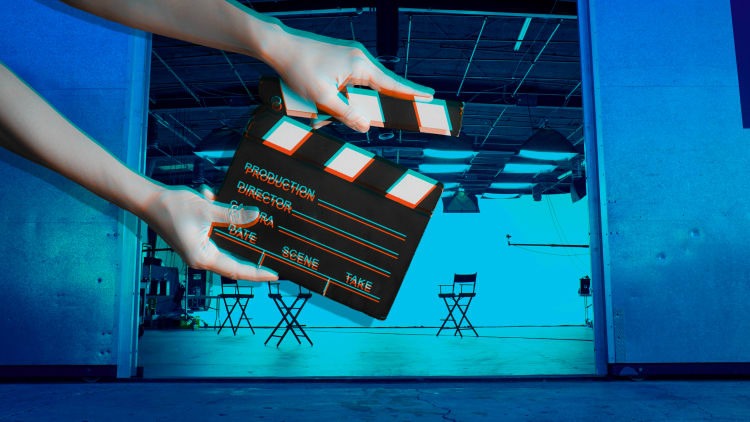- | 8:00 am
Influencer houses are dead. Welcome to the production studio era
A slew of creators are buying up plots of studio land to film and edit their content.

Influencers today look a lot more like Hollywood executives than ragtag social media users. And they’re buying up the real estate to prove it.
A slew of creators have been buying plots of studio land to film and edit their content. That marks a shift from the influencers of yesteryear, many of whom purchased or rented mansions to act as their internet-fueled fraternity houses. Often, those mansions housed 10 or so different influencers, acting as a pseudo-collective for the viral era. But now, as the creator economy has grown more profitable, influencers have grown past the need for 24/7 collaboration—and roommates.
The birth of the production studio
Last week, Alan Chikin Chow opened the doors to his 10,000-square-foot Los Angeles production studio. Chikin Chow—who’s built a following of more than 67 million subscribers through YouTube videos including “My Baby is a Vampire!?” and “My Girlfriend was Kidnapped!?“—now owns a sprawling studio of 10 custom-built sets for his staff of 20 to film on, according to User Mag. The studio is tricked out for YouTube production, including high-tech cameras and internet-ready lighting.
Other recent land barons include the Dude Perfect guys, who can now use their 80,000 square feet in Frisco, Texas, to film their sports stunts. That’s in addition to their Frisco headquarters, itself 20,000 square feet and priced at $3 million, per the Texas Department of Licensing and Regulation. And MrBeast, YouTube’s most subscribed-to creator (aka Jimmy Donaldson), owns a 50,000-square-foot “Studio C” in Greenville, North Carolina. (According to the Washington Post, MrBeast’s influence on Greenville may be bigger than just the production studio, with employees and collaborators buying up the local homes.)
In a very internet-appropriate meta twist, the process of building a production studio has itself become a YouTube video genre. Creator Constantin’s 400-square-foot space and necessary equipment cost him in excess of $100,000—but he got about 500,000 views for the breakdown. Gaming creator SypherPK founded Oni Studios to help other influencers make it big—and built a $10 million compound for his nascent company. YouTuber Ten Hundred bought out a 15,000-square-foot warehouse, which he completely remodeled (while, of course, documenting the journey).
What happened to all the influencer houses?
The last decade has been dominated by the “influencer house,” as collectives of YouTubers and TikTokers room under one roof to churn out an endless slew of content.
So-called collab houses go all the way back to 2012, when creators Connor Franta and Ricky Dillon moved in together to produce their channel, Our2ndLife (or O2L). That same year, FaZe Banks created the first gaming house, coining the still-kicking FaZe Clan. Most infamously, Jake Paul created his own collab house Team 10 in 2016, performing endless (and controversial) pranks and recording ill-fated songs.
In the early 2020s, the influencer house got its second life on TikTok. The Hype House included residents Thomas Petrou and Alex Warren, as well as a long lineage of other TikTok stars, such as Charli D’Amelio, who would stop by to film. They actually ended up getting their own Netflix reality show, Hype House, before the group splintered and sold off the mansion. But from that group, dozens of other houses were spawned: The Sway House, The Clubhouse, The Not a Content House, and the list goes on.
Now, influencer houses are a rarity. They don’t need to live among their coworkers anymore; the creator economy is profitable enough that they can fly solo. Better yet, they can build up their own company—and buy up their own land.






































